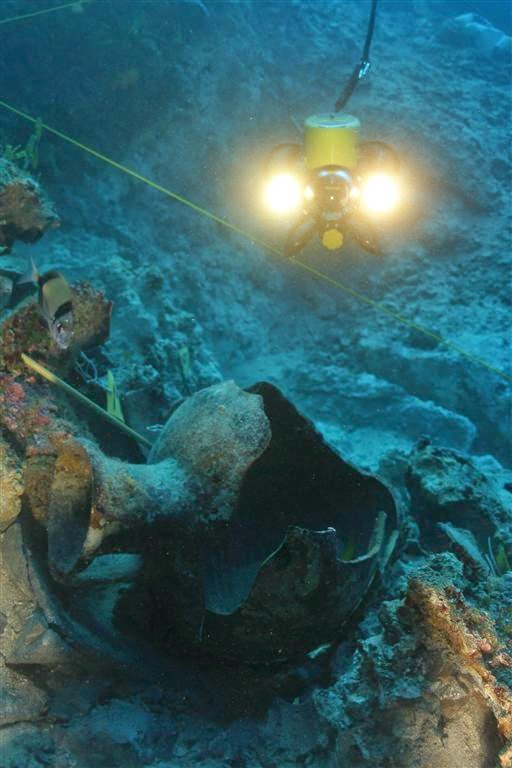The underwater archaeological project in the Argolic Gulf known as Terra Submersa concluded after a month in Greece. The mission – led by the University of Geneva aboard the MS Turanor PlanetSolar – was to explore the prehistoric landscapes that have been submersed by the waters in the Argolic Gulf, and identify traces of human activity. While in Greece, archaeologists presented their work to the public and local authorities through a series of events organized at three stops – Eretria, Athens and Nafplio.
The Greek-Swiss expedition, led by the Geneva University in collaboration with the Laténium of Neuchâtel, the Greek Service for Underwater Antiquities, the Swiss School of Archeology in Greece and the Hellenic Center for Maritime Research, aimed to explore the prehistoric landscapes that have been submerged by the waters of the Argolic Gulf in an attempt to remodel them and identify possible human traces.
At the end of the last Ice Age that took place about 20,000 years ago, the sea level was much lower than it is today. Archaeologists mapped the landscapes that have disappeared underwater in the hope of understanding the dynamic through which coastal zones were populated.
Much of the 11-day research focused on the Franchti cave, Kiladha Bay, used from the Paleolithic to the Neolithic Ages for 35,000 years.
“We collected fantastic data, whose analysis will take two years of work,” enthuses Julien Beck, the expedition’s lead scientist. “The preliminary results are encouraging!” In fact, by mapping the seabeds, the researchers found paleobeaches dating back to different periods in prehistory.
It is believed that these beaches were visited by the users of the Franchti cave, in which scientists recovered shells and the fish bones. Furthermore, faults indicating tectonic shifts in the Argolic Gulf have been detected with the echo-sonar installed aboard the solar-powered ship. These faults could explain the difference in depth of the paleobeaches.
PlanetSolar is extremely satisfied with this mission. At each stop, the ship was met with enthusiasm by the public, and drew the attention of Greek authorities. Thus, more than 2,000 people stepped through the catamaran’s walkway. Moreover, PlanetSolar had the opportunity to welcome local political figures aboard, including Cultureand Sports Minister: Constantinos Tassoulas, Environment, Energy and Climate Change Minister Giannis Maniats as well as the wife of the Greek Prime Minister Antonis Samaras. On the Swiss side, PlanetSolar also notably welcomed Walter Steinmann, director of the Federal Energy Office (OFEN).
Currently, the ship and her crew are sailing towards Venice. They are expected to drop anchor in the City of Doges on September 4.
Footage from the visit –
Meeting with the public in Eretria –
Ask me anything
Explore related questions











